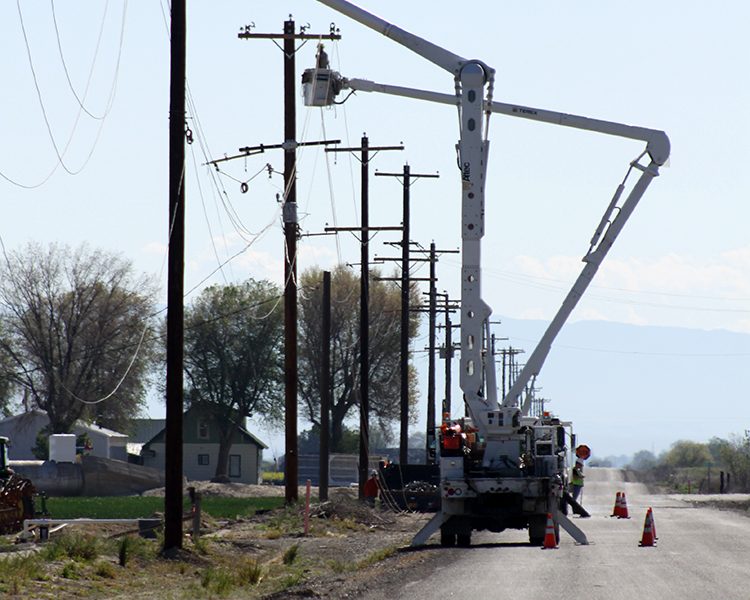


 A line crew works on an area along Railroad Avenue last week to prepare for a new solar farm that will be built nearby. Six solar farms are going in at sites in Malheur County. (The Enterprise/Pat Caldwell)
A line crew works on an area along Railroad Avenue last week to prepare for a new solar farm that will be built nearby. Six solar farms are going in at sites in Malheur County. (The Enterprise/Pat Caldwell)By Pat Caldwell
Malheur Enterprise
VALE – Work on six solar projects at six sites in Malheur County is in full swing.
“They are of various sizes. Really depends on the topography,” said Alvin Scott, Malheur County planning director.
The combined projects are being developed under the auspices of Pasadena, Calif.-based The Coronal Group, at locations near Ontario, Owyhee Junction, the Vale Airport, and Trenkle Hill, along Railroad Avenue, and between Cairo Junction and Nyssa.
Swinerton Renewable Energy is the contractor for the building phase of the project.
“They are limited in the amount of electricity they can produce. The law says up to 10 megs (megawatts),” Scott said.
Each solar farm, Scott said, is operated by a different limited liability firm.
“Basically each one are independent companies. They lease the property. They retain ownership of the equipment. Idaho Power has to make the transmission line available but the company has to reimburse Idaho Power,” he said.
Yet Idaho Power is required by law to buy the power from the firms under contracts that usually require about 10 megawatts of power, company spokesman Brad Bowlin said.
“It is not a huge amount of electricity. Those (in Malheur County) are the smallest of the solar projects we have under contract,” he said.
Idaho Power, he said, boasts agreements with solar farms in Oregon and the Gem state.
“We have 15 contracts, six in Oregon and nine in Idaho. We are required to contract with them,” he said.
Scott said a company can’t just come into Malheur County and build a solar farm anywhere.
“It has to be not on high value soils. Can’t be Class A ground,” he said.
Each solar farm must secure approval of the planning commission, he said.
“They have to be able to connect to a transmission line,” Scott said.
All six being developed are on private property.
Private landowners who enter into an agreement with the solar farms lose their farm deferral status, he said, if the pact is approved.
He also said once the solar farm construction work begins, the value of the land increases which, in turn, boosts its tax rate and stimulates more revenue for county coffers.
“It increases the value of the land,” Scott said. “The thing is, you are looking at ground that has been taxed at a low rate because it is poor ground. It changes the use, that would mean higher taxes. They will also tax the equipment.”
Bowlin said there is one advantage for Idaho Power from the electricity generated by the solar farms.
“Solar power does track along with our peak demands better than wind (power), for example,” he said.
However, he said Idaho Power doesn’t necessarily require the extra electricity generated by the farms.
“We don’t need the additional energy. Idaho Power has sufficient energy resources already on its system well past 2020,” he said.
Any added expense to Idaho Power, he said, regarding the purchase of power from the solar farms is sent to one place.
“The cost piece is basically a pass-through to our customers,” he said.




